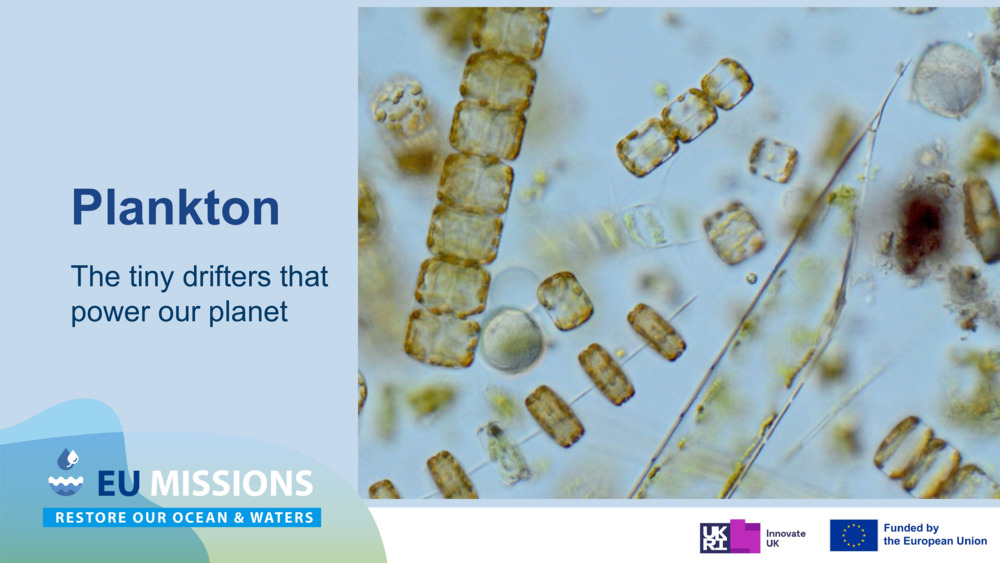Cyanobacteria:
Cyanobacteria:
Cyanobacteria: A lso known as blue-green algae , these phytoplankton are a form of bacteria. Especially in freshwater, cyanobacteria can cause toxic blooms. Diatom: Single-celled microalgae. One of the most abundant and diverse phytoplankton groups. Dinoflagellate: Have two flagella (hair-like organelles). Many are mixoplankton , and some are toxic and responsible for 'harmful algal blooms'. Coccolithophore: Composed of individual plates or scales made of calcium carbonate and play an important role in the global carbon cycle. Many are mixoplankton . Green algae: Green due to the absence of the brown and red pigments in many microalgae. They are mostly found in the coastal waters of the tropics and subtropics. Some are mixoplankton . Microalgal plankton (phytoplankton and m ixoplankton ) (Image source: NASA. Collage adapted from drawings and micrographs by Sally Bensusen , NASA EOS Project Science Office.)

Original Slide Deck: Plankton: The tiny drifters that power the ocean
Topics: Biodiversity. Ocean Currents. Deoxygenation. Ocean Chemistry. Ocean. Climate. Sustainable Resources. Ecosystem Services.
Suitable Ages: 11. 12. 13. 14. 15. 16.
Keywords: Algae. Aquatic Animals. Bacteria. Biodiversity. Biology. Carbon. Carbon Cycle. Carbon Dioxide. Changing Environment. Climate. Climate Change. Conservation. Contamination. Ecosystem. Environment. Eutrophication. Fertilisers. Food Chain. Habitats. Harmful Algal Blooms (Hab). Hypoxia. Mixoplankton. Nutrient Cycle. Nutrients. Oceans. Organisms. Photosynthesis. Phytoplankton. Pollution. Protozooplankton. Sustainability. Toxins. Zooplankton.
Uploaded By: pml-admin
Number of bundles using this content: 1
Licensed under CC BY 4.0
This content has been used in the following resource bundles:
Plankton: The tiny drifters that power the ocean
Explore the fascinating world of plankton — the tiny organisms that dr...
View Bundle